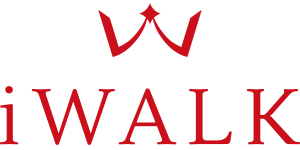In recent years, power banks have become an essential part of everyday life. But as the market has expanded rapidly, so has the problem of inconsistent quality.
The risks often stem from low-cost products that lack critical safety features, such as overcharge protection, automatic power cutoff, or the use of cheap or recycled battery cells. These issues can not only damage your phone but also pose serious risks to personal safety and property.
So, how can you tell if a power bank is truly safe in 2025? What certifications matter? And which features are worth paying for? This guide breaks it all down and recommends a high-quality, travel-friendly power bank with full safety protection.
Why Power Bank Safety Matters
Modern power banks use lithium-ion (Li-ion) or lithium-polymer (Li-poly) batteries — the same technology found in smartphones and laptops. These cells can store large amounts of energy, and if poorly designed, they can become unstable.

There have been numerous reports of cheap power banks overheating, swelling, or catching fire due to:
Lack of essential safety protections
Poor-quality or fake battery cells
Inadequate manufacturing standards
Key Safety Certifications in 2025
Before buying a power bank, especially online, look for the following globally recognized certifications that ensure product safety and compliance:

UL Certification (Underwriters Laboratories):
UL certification is the product safety certification issued by the American Underwriters Laboratories (UL). It mainly tests and certifies product safety performance and does not include electromagnetic compatibility.。UL certification is voluntary in the United States, but many products exported to the United States need to be UL certified. Products that have obtained UL certification mean that they comply with relevant safety standards and regulations, thus improving product safety and reliability.
FCC Certification (Federal Communications Commission):
FCC safety mainly refers to Federal Communications Commission (FCC) certification, especially for safety and electromagnetic compatibility requirements for electronic products entering the US market。FCC certification is a necessary step to ensure that products comply with U.S. federal safety standards to prevent electromagnetic interference and protect public safety.
CE Mark (Conformité Européenne):
The "CE" mark, which stands for European Conformity, is a mandatory marking for products sold within the European Economic Area (EEA). It signifies that the manufacturer has assessed the product and deemed it to meet the applicable EU safety, health, and environmental protection requirements. The CE mark allows products to circulate freely within the EEA single market.
UKCA Mark:
The UKCA (UK Conformity Assessed) marking is a product marking used to indicate that a product meets the relevant UK product safety regulations and is placed on the market in Great Britain. It's essentially the UK's equivalent of the CE marking and applies to most products that previously required a CE marking for the UK market.
RoHS (Restriction of Hazardous Substances):
RoHS stands for Restriction of Hazardous Substances. It's a European Union directive that restricts the use of specific hazardous materials in the manufacture of various electronic and electrical equipment. The goal is to protect human health and the environment by reducing hazardous waste and promoting safer product lifecycles.
WEEE (Waste Electrical and Electronic Equipment):
The Waste Electrical and Electronic Equipment (WEEE) directive refers to the European Community Directive 2012/19/EU. It mandates the treatment, recovery, and recycling of electric and electronic equipment. WEEE compliance is designed to encourage environmentally safe recycling. All affected products for the EU must adhere to WEEE compliance and carry the “Wheelie Bin” mark. This legislation strives to maintain better control systems for the disposal and reuse of electrical/electronic appliances and parts, which can have an adverse effect on the environment when they are disposed of improperly.
CCC / 3C (China Compulsory Certification):
CCC, or 3C, stands for China Compulsory Certification. It is a mandatory safety and quality mark for many products imported, sold, or used in the Chinese market. The CCC mark indicates that a product has met the necessary safety and quality standards set by the Chinese government.
When shopping, make sure these certifications are listed clearly, and not just printed as logos without verification.
What to Look For: 5 Key Safety Features
1. Overcharge and Overheat Protection
Safe power banks stop charging when full, preventing overheating and battery degradation. This reduces the risk of fire or battery failure.
2. Short-Circuit Protection
A critical safety feature that cuts off the circuit if the power bank accidentally contacts metal objects like keys or coins.
Tip: Always store your power bank away from metal items in your bag or pocket.
3. Clear Battery Specs
Trustworthy power banks display the following clearly:
Capacity (in mAh or Wh)
Voltage and output ratings
Fast charging protocols (e.g., Power Delivery, Quick Charge)

For air travel, the FAA allows lithium batteries under 100 Wh in carry-on baggage. Make sure this value is clearly stated.
4. High-Quality Battery Cells
Top brands use cells from manufacturers like Samsung or LG, while low-quality models often contain unbranded or recycled batteries prone to failure.
5. Reliable Brand Reputation
Always buy from brands that provide warranty coverage, safety certifications, and transparency. Be cautious of exaggerated claims like "50,000mAh in your pocket."
Lithium-Ion vs. Lithium-Polymer Batteries
Li-ion: More stable, widely used, and generally safer under high charge/discharge cycles.
Li-poly: Lighter and more flexible in design, but prone to swelling or leakage if not well-protected.
While both types are common, Li-ion is often the safer choice for compact, travel-friendly devices.
Common issues with unverified products include:
Battery leakage
Overheating and fire risk
Poor internal insulation
Inconsistent voltage output
Permanent damage to phones or tablets
To avoid these risks, always verify certifications like UL, FCC, CE, or RoHS before purchasing.
How to Use Your Power Bank Safely
Even a certified power bank needs to be used responsibly. Follow these tips:
Never charge your power bank in enclosed, flammable spaces (e.g., under a pillow)
Avoid high-heat environments like cars in summer
Only use original or certified USB cables and wall adapters
Stop using the device if it shows swelling, leaking, or abnormal heat
Keep it away from water or humid areas
A Trusted Option: iWALK PowerMini
If you're looking for a safe, travel-ready, and fast-charging power bank with global certifications, the iWALK PowerMini is a solid choice.

Certified for Safety:
Comes with UL, FCC, CE, UKCA, RoHS, and WEEE certifications — ensuring compliance with international safety and environmental standards.
Smart Protections Built In:
Includes overcharge, overcurrent, short-circuit, and overheat protection mechanisms.
Compact and Convenient:
Features a built-in USB-C cable and compact 10000mAh capacity — perfect for carry-on use under FAA limits (37Wh).
Fast-Charging Technology:
Supports 22.5W USB-C Power Delivery — ideal for charging modern Android phones, tablets, and accessories at full speed.
Whether you're heading to work or catching a flight, the PowerMini provides safe, certified charging without the bulk.
Conclusion
Power bank safety isn’t just about product quality — it’s about protecting your phone, your home, and yourself. By choosing a model with verified certifications and proper safety features, you're avoiding unnecessary risks and ensuring peace of mind.
To recap, always check for:
Clear safety certifications (UL, FCC, CE, RoHS)
Built-in protection circuits
Realistic battery specs and honest branding
Good reputation and transparent product info










